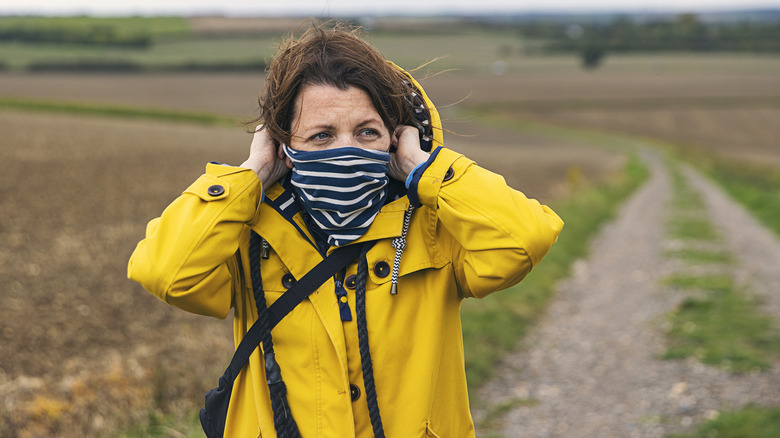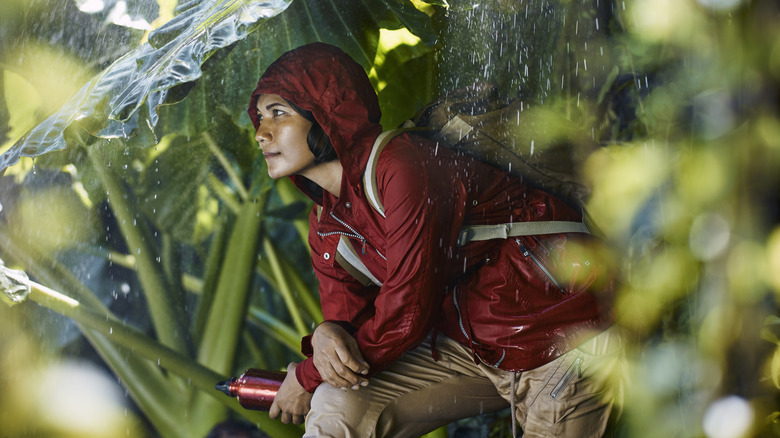Most hikers typically check the forecast for rain and temperature before heading out on the trail. After all, no one likes the idea of getting caught in a potential downpour in the middle of a trek, right? That said, although these types of conditions are important to monitor, there’s one particular weather forecast that often gets overlooked despite posing some serious safety risks: wind speed. Because, while you might think that a breezy day sounds like the perfect time for a hike, the truth is that even moderate winds can quickly turn into serious hazards — transforming what should have been a pleasant outdoor adventure into a dangerous situation.
The thing about wind is that it can be particularly problematic and unpredictable — especially in mountainous terrains, where speeds can be significantly higher than at lower elevations. That’s why what feels like a gentle breeze in the parking lot can turn into a pretty forceful gust on exposed ridges, summits, and open trails. To make matters even more complicated, this combination of wind and elevation can lead to conditions that might affect your balance, body temperature, and overall hiking experience.
Beyond the physical challenges, there’s also the timing factor. Unlike rain — which you can see and feel almost immediately — dangerous wind speeds often develop unpredictably and may not even reach their peak until you’ve already committed to your route. Plus, conditions can also change pretty dramatically as you gain elevation, and what once seemed as a manageable situation can quickly escalate from there. That’s why, whether you’re headed out on a day trip or going on a long-distance hiking adventure, it’s always essential to check detailed weather forecasts and to understand the warning signs before you inadvertently find yourself in a compromising position on the trail.
Why high winds pose serious risks on hiking trails
As a general rule, wind becomes a legitimate safety concern once speeds reach around 30 miles per hour — although even lower speeds can be problematic in certain conditions too. At this threshold, you’ll start to notice clear resistance when walking, and maintaining your normal pace will become more challenging. This means that the physical effort required to hike will increase significantly — meaning that you’re likely to get more tired a lot quicker. In terms of visual cues, large branches will start moving noticeably, and you might hear whistling sounds as the air moves through trees and rock formations.
Once wind speeds climb above 35 miles per hour, the situation becomes genuinely dangerous. Whole trees will begin swaying dramatically, and walking against the wind will require even more considerable effort. Along with that, your balance will also become compromised, especially on narrow trails or near cliff edges where a stumble could have serious consequences. At these speeds, falling branches can become a real hazard, and the risk of debris hitting hikers also increases dramatically. This dangerous combination of unstable footing and environmental hazards makes continuing a hike inadvisable.
Lastly, anything beyond 40 miles per hour essentially creates some pretty extreme conditions where even experienced hikers should seriously consider turning back or seeking shelter. At this level, progress becomes extremely difficult, and the physical demands can quickly exhaust even well-conditioned hikers. You’ll see tree branches snapping regularly, creating dangerous projectiles, and the constant buffeting (getting pushed and pulled by strong gusts from different directions) can lead to fatigue much faster than normal hiking conditions. As a result, the risk of injury from potential trips or flying debris becomes significant enough that the benefits of continuing rarely outweigh the potential dangers.




